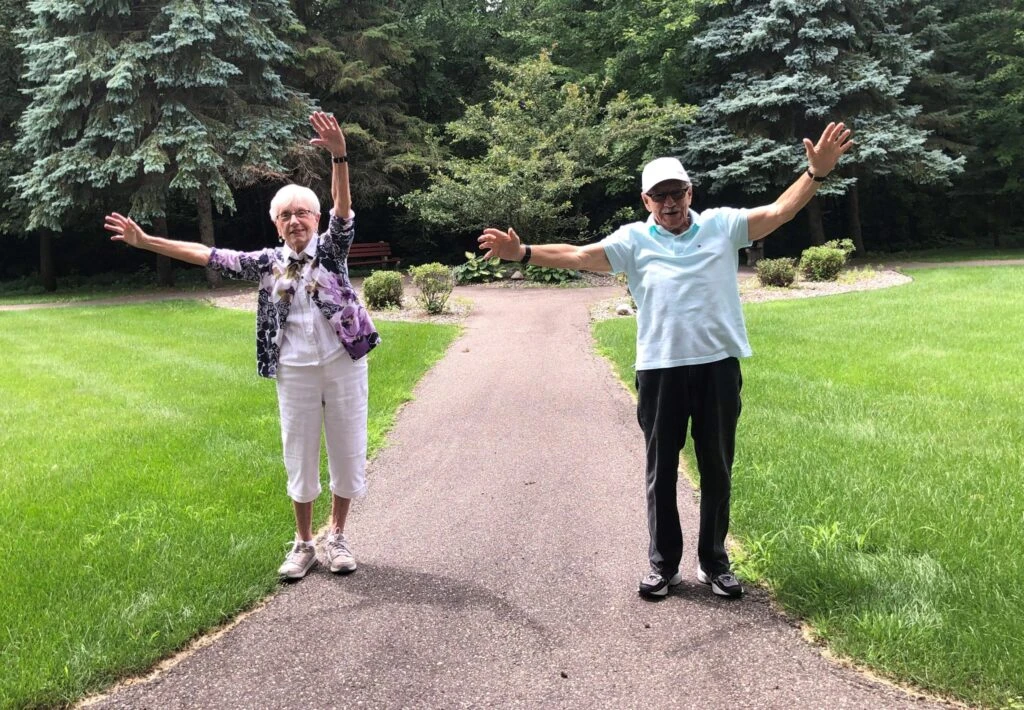
Exercise is one of the best things you can do for your body, no matter your age. The benefits are many. Regular exercise improves strength and flexibility, strengthens cardiovascular and immune systems, helps reduce the risks of falls, promotes better sleep and digestion, and much more. Exercise and movement are vital for maintaining the basic daily function needed to live independently.
The goal is simple: move your body every day in any way possible. Remember, before you begin any fitness program it is important to get approval from your physician and ask about specific precautions that are advised.
What is the best way to exercise? In general, there are four basic types of exercise: endurance, strength, flexibility, and balance.
CARDIO ENDURANCE
Heart-healthy cardiovascular endurance exercise includes movement activities like walking, biking, and swimming. Gardening, housework, walking up and downstairs, even marching your legs while seated, can also count as cardio fitness. This type of exercise strengthens your heart and lungs, burns calories, and boosts your mood through the release of endorphins. Cardio exercise can help manage high blood pressure, heart disease, and diabetes.
Suggestion: Take a walk.
Start out slowly and gradually add more time to your walks. If you have not been active, start with 5 -10 minutes of light walking 3 to 4 times a week. Gradually work up to 20 – 30 minutes of brisk walking five times each week.
MUSCLE STRENGTH TRAINING
Along with walking, strength training is one of the best things you can do to stay fit and live independently as you age. Normal activities of daily living, like getting up from a chair, require adequate muscle strength. Placing demand on the muscular-skeletal system by using weights, therapy bands, or your own body weight will help you maintain or increase your strength. Exercise with weights or resistance can also help maintain or even increase bone density.
Suggestion: Chair Squats
Stand in front of a tall sturdy chair. With your feet and knees, shoulder-width apart and your arms lifted in front, slowly squat down towards the seat of the chair by bending your knees and driving your hips back. Keep your abdominal muscles contracted to support your back. Lower to the chair without actually sitting down then slowly rise back to standing. Add repetitions as you get stronger.
FLEXIBILITY
Flexibility helps with the many functions of daily living, like turning your head to check for traffic or reaching up to a shelf. Range of motion exercises and light stretching can ease stiff joints and muscle tension, and over time, improve your general flexibility. If you spend a lot of time sitting or looking at a screen, simple stretching movements will help get the stiffness out of your shoulders, back, and hips.
Suggestion: Shoulder Roll
Stand tall or sit tall in a chair with your body slightly forward. Gently bring your shoulders forward, up, back, and down. Breathe deeply and go slowly. Repeat 3 to 5 times.
BALANCE
Your risk of falling –along with hip fractures and head injuries – increases as you age. Strength training and endurance exercises, like walking, can help lower your risk. You can protect yourself even more by adding balance exercises to your daily routine.
Suggestion: Single leg stand
Stand next to a sturdy chair or counter. Keeping your spine pulled tall, gradually shift your weight into one leg. Lift your foot slightly off the floor and try to hold for 30 seconds using your arms for balance as little as possible. Switch legs. Keeping your eyes focused on a point straight ahead will help you maintain your balance.
SENIOR LIVING & ACTIVITY TIPS
Sit less. Move more. Aim to sit no longer than 30 minutes at a time. Get up during TV commercials. Walk around the room or march in place to take a healthy break from your computer or reading.
Stay mindful of your body. Slow down when you are out of breath or your muscles start to become overworked. Never force a movement that causes pain.
Hydrate. Older adults can become dehydrated quickly. Drink water before, during, and after exercising, even if you don’t feel thirsty.
Wear proper footwear and avoid uneven surfaces. Be aware of your environment. Stay safe by using a sturdy chair or counter in case you lose your balance.
FITNESS DURING COVID-19
For indoor fitness, take advantage of free online senior fitness programs and virtual classes. You can watch and work out from the comfort of your own home. YMCA360.org offers a wide range of classes, including many specifically for older adults. If you have a Silver Sneakers membership provided by your Medicare Advantage Plan, you can access their video library of workouts and fitness programs.
Get outdoors! Enjoy the company of a friend or family member while walking outside. You’ll find that spending time with others while maintaining safe distancing, is good for your body and soul.
RosePointe Provides the Best in Senior Living & Activities
At RosePointe, we know the importance of physical activity for our residents to stay active, yet safe. In accordance with COVID-19 guidelines, our fitness center has a limited capacity. Options include our treadmill, stationary bike, and NUSTEP recumbent step machine, as well as hand weights and TheraBands. Fitness classes, including chair yoga, have moved outside to our patios to allow for open-air physical distancing. Common area hallways with handrails act as safe walking trails inside our building. For those who want to venture out, miles of paths, sidewalks, and parks are accessible around and near our building.
